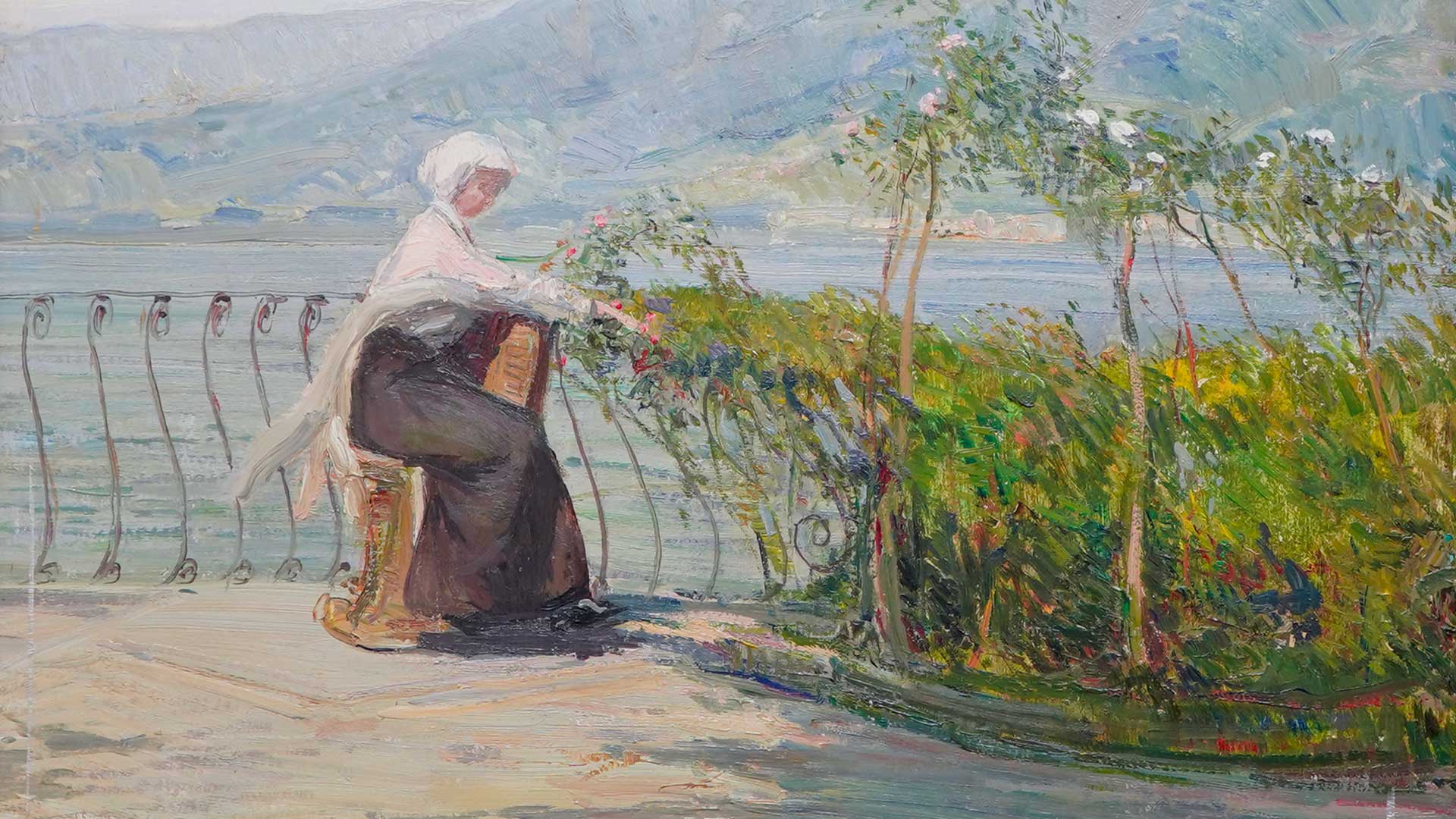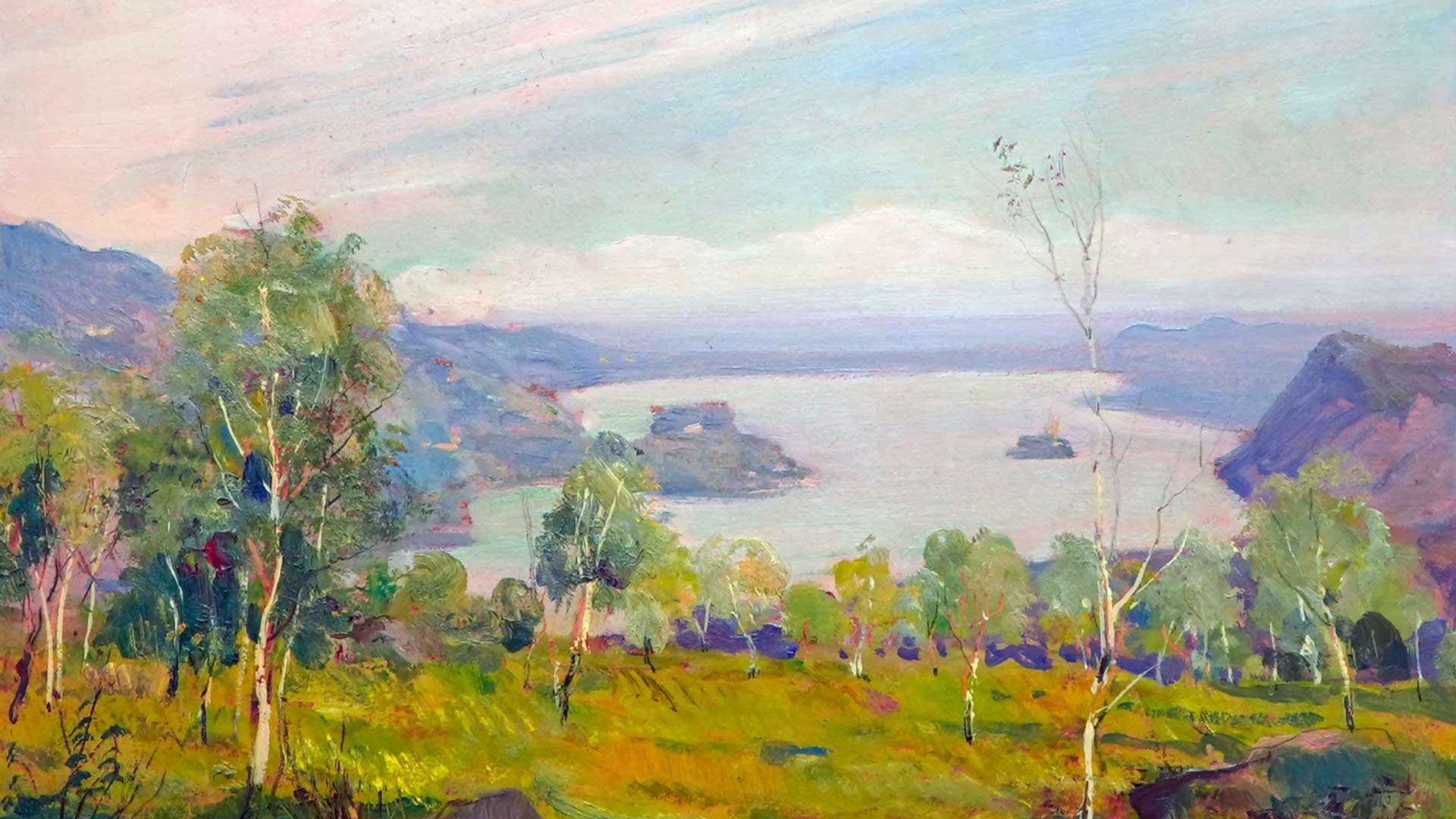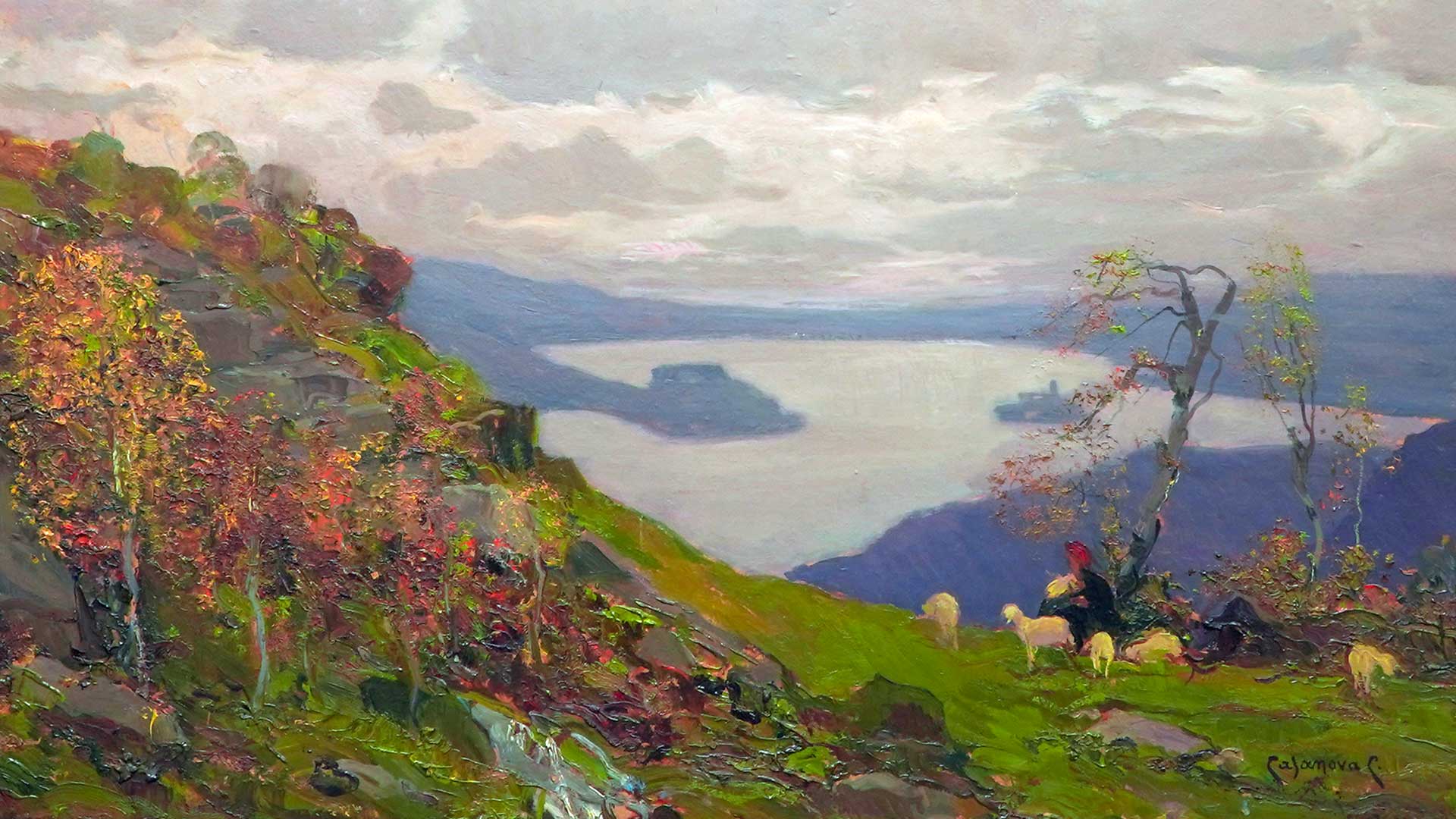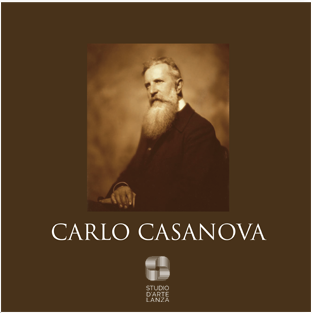Carlo Casanova






Biography
Carlo Casanova was born in Crema on 21 June 1871.
The family, originally from the Lodi area, is in Crema because the father has a position as president of the local court. At the age of 10 he was orphaned, before his father, shortly after his mother. Along with him there is also a younger sister, to whom he will remain attached forever.
The loneliness of his childhood and early youth, however, has great importance for the formation of the artist’s character and inner sensitivity. After the death of his parents, he is entrusted to a tutor, an honest and scrupulous man, who would like to direct him towards a promising degree course for the future, even if this could compromise Carlo’s interest in painting.
He attended the Barnabiti college in Moncalieri, where he met his first painting teacher, the Tedeschi of Turin, who, recognizing the young man’s particular talent, led him to meet the world of art. After completing his studies in Moncalieri and still under the wing of his tutor, he enrolled in the Faculty of Engineering at the University of Padova and finished it in 1895. But throughout his university studies, his passion for painting and drawing remained live: often on the back of his studio projects, there are free designs and sketches.
Once the degree is obtained, the tutor lets his pupil follow his true aspirations. Now Carlo is free to practice art and starts painting full time, as a pupil of his friend Stefano Bersani. He moves to Milan where he meets the world of art. Here he discovers the full bohèmienne atmosphere of the Scapigliatura: made up of bizarre characters, writers, poets, painters, sculptors, dramatists, actors, with the inspiring muses.
In a short time, Casanova becomes a protagonist of this world, managing to dampen his innate shyness. A few years later, during a holiday at the Foci di Magra, in Lunigiana, he feels a strong understanding of ideas and inspiration with the painter Aldo Carpi.
In 1903, following his hermitages in the Alps, he happened to be in Quarna, a small mountain town above Lake Orta, and this place became fundamental for his development as a romantic artist. The cherry trees in bloom whose wood is really a source of work for the artisans and makers of musical instruments who live in Quarna, together with the picturesque thatched-roof houses of this village in the woods, become for Casanova the most pleasant place to give life to his drawings and inspire his landscapes.

Pubblicazioni
Studio d’Arte Lanza has dedicated a publication to the works of Carlo Casanova.
Carlo Casanova






Biography
Carlo Casanova was born in Crema on 21 June 1871.
The family, originally from the Lodi area, is in Crema because the father has a position as president of the local court. At the age of 10 he was orphaned, before his father, shortly after his mother. Along with him there is also a younger sister, to whom he will remain attached forever.
The loneliness of his childhood and early youth, however, has great importance for the formation of the artist’s character and inner sensitivity. After the death of his parents, he is entrusted to a tutor, an honest and scrupulous man, who would like to direct him towards a promising degree course for the future, even if this could compromise Carlo’s interest in painting.
He attended the Barnabiti college in Moncalieri, where he met his first painting teacher, the Tedeschi of Turin, who, recognizing the young man’s particular talent, led him to meet the world of art. After completing his studies in Moncalieri and still under the wing of his tutor, he enrolled in the Faculty of Engineering at the University of Padova and finished it in 1895. But throughout his university studies, his passion for painting and drawing remained live: often on the back of his studio projects, there are free designs and sketches.
Once the degree is obtained, the tutor lets his pupil follow his true aspirations. Now Carlo is free to practice art and starts painting full time, as a pupil of his friend Stefano Bersani. He moves to Milan where he meets the world of art. Here he discovers the full bohèmienne atmosphere of the Scapigliatura: made up of bizarre characters, writers, poets, painters, sculptors, dramatists, actors, with the inspiring muses.
In a short time, Casanova becomes a protagonist of this world, managing to dampen his innate shyness. A few years later, during a holiday at the Foci di Magra, in Lunigiana, he feels a strong understanding of ideas and inspiration with the painter Aldo Carpi.
In 1903, following his hermitages in the Alps, he happened to be in Quarna, a small mountain town above Lake Orta, and this place became fundamental for his development as a romantic artist. The cherry trees in bloom whose wood is really a source of work for the artisans and makers of musical instruments who live in Quarna, together with the picturesque thatched-roof houses of this village in the woods, become for Casanova the most pleasant place to give life to his drawings and inspire his landscapes.


Pubblicazioni
Studio d’Arte Lanza has dedicated a publication to the works of Carlo Casanova.
